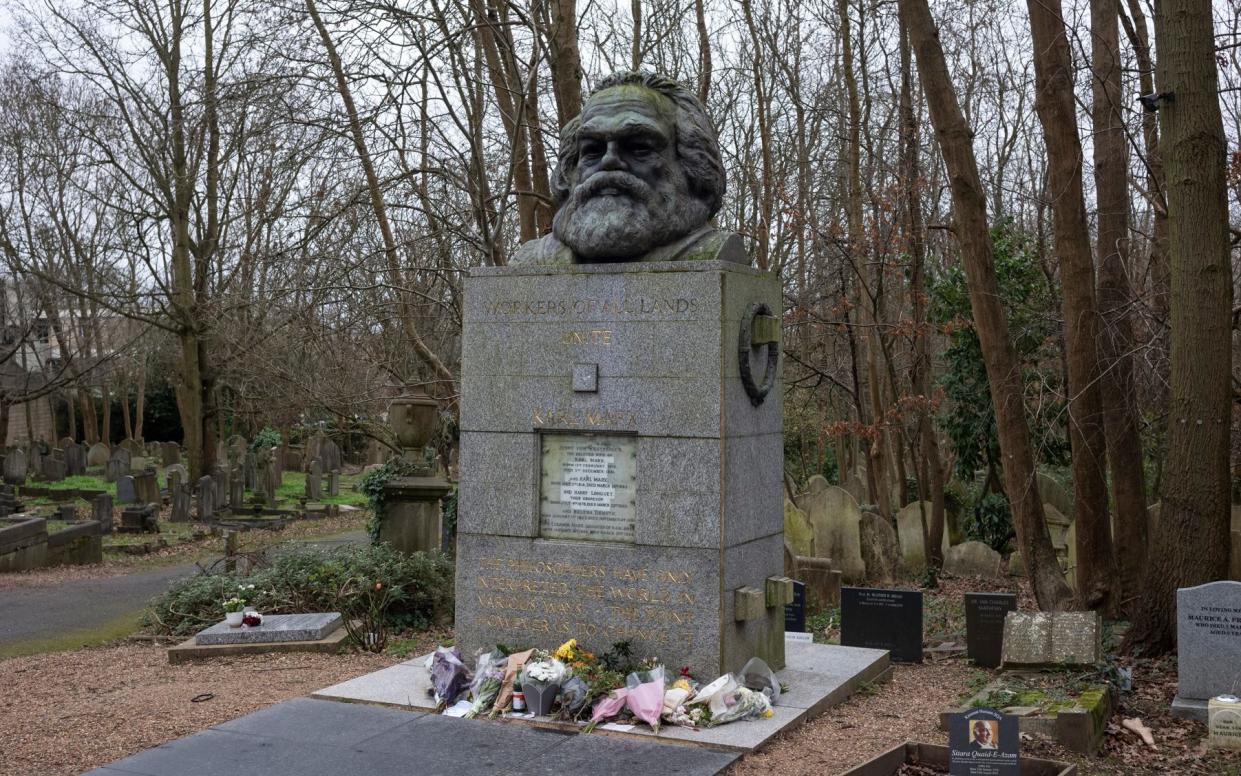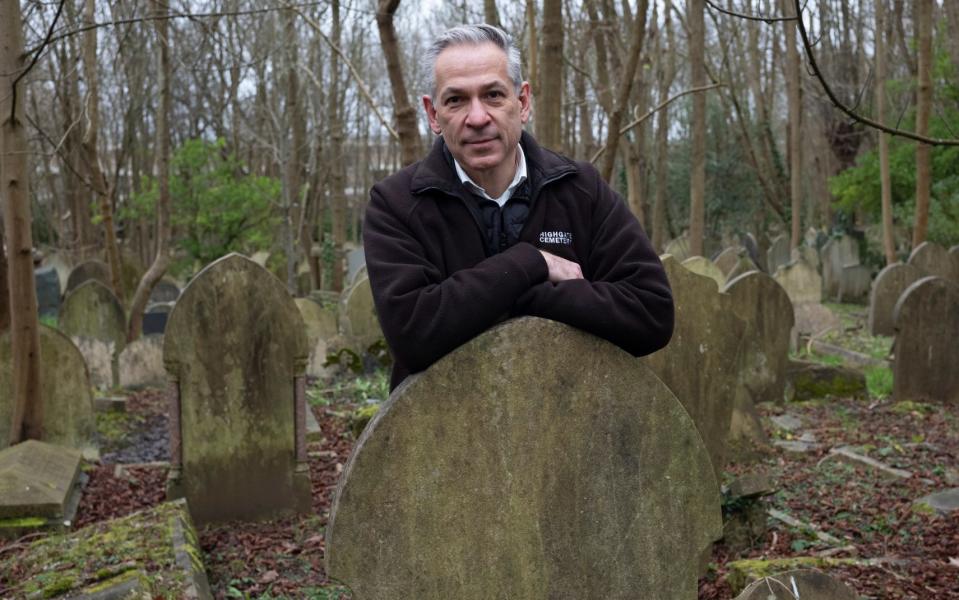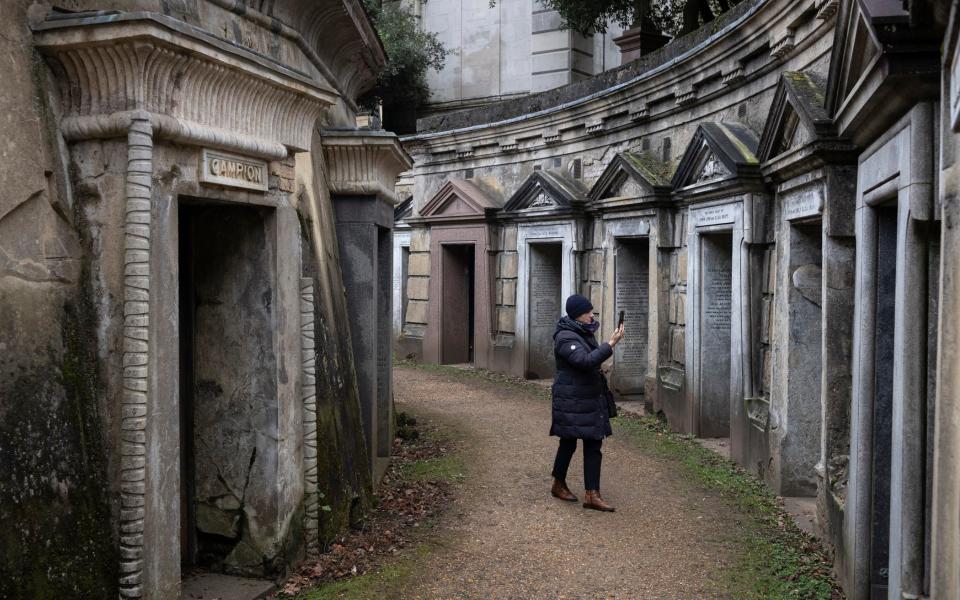Want to be buried next to Karl Marx? Highgate Cemetery will make room for you ... for £25,000

- Oops!Something went wrong.Please try again later.
Highgate Cemetery will make room for new graves near Karl Marx’s tomb and charge £25,000 for each one.
The working cemetery and north London tourist site has secured £100,000 of National Lottery funding to help secure its future through conservation work, and landscaping to add to the 53,000 graves on the crowded site.
Highgate will begin making room for lucrative new burials near the tomb of Marx, on ground that is particularly coveted by communists.
Former leaders in the Iraqi and South African Communist parties are buried near the final resting place of the German philosopher, whose Left-wing cachet could help maintain the cemetery’s income stream.
Ian Dungavell, the chief executive of the cemetery, said that new burials were important to keep Highgate a “living” attraction.
He said: “What makes Highgate Cemetery so interesting is that it is living heritage, not just a relic. It is still a place where things are happening now, where people are buried, and where people come to remember them.
“From its earliest days, it was a visitor attraction and a place of burial, and both activities are essential to its future.”

Space is at a premium in the 37-acre site near Hampstead Heath, which is the final resting place of famous figures including George Michael, George Eliot, Douglas Adams and Michael Faraday.
The cost of burial at the site ranges from around £5,000 for cremation plots, to £25,000 and upwards for a full grave, depending on size and location.
The cemetery was given powers under the Highgate Cemetery Act 2022 to clear old graves and make room for new burials, which represent around 50 per cent of its income, with visitors’ entrance fees roughly making up the other half of its funding.
Some older grave-sites, where the monuments are crumbling and contemporary relatives of the deceased are also long dead, have been earmarked for new burials, and the prime real estate near the occasionally defaced tomb of Marx will be first to be developed.
Mr Dungavell has set up an objection system, allowing surviving relatives of the 173,000 people buried in Highgate to stop individual graves being redeveloped.
The exiled Marx died in London in 1883 and was buried in a modest grave, before his body was reinterred in 1954 under a vast tomb paid for by the Communist Party of Great Britain, close to which were later buried Saad Saadi Adi, the Iraqi communist leader, Dr Yusuf Mohamed Dadoo, the chairman of the South African Communist Party, and Paul Foot, the Socialist Worker journalist.

Highgate will develop the crumbling graves near Marx’s original grave, around 20 feet from his current tomb, but work will rely on extensive landscaping and flood-proofing.
The cemetery has secured a £100,000 National Lottery Heritage Fund grant which will support this work as part of the Unlocking Highgate Cemetery project covering landscaping, building conservation, and improving visitor experience of the site.
The site of the 19th-century cemetery, built for profit at a time when churchyards were filling up, is covered with ash trees riddled with ash die-back and at risk of falling on to grave monuments and visitors.
Many of these trees will be cleared in planned landscaping, drainage will be improved, wildlife protected, and paths will be relaid to provide easier and step-free access for visitors.
A Grade I listed row of Egyptian-themed tombs will be conserved with help from the Heritage Fund, along with Grade I listed catacombs at the highest point in the cemetery.
An Anglican and a Dissenters’ chapel on the site will also be restored, and opened up as public spaces. Funding will also support community outreach, to help make tours and interpretation of the site more wide-ranging and accessible.
Lottery funding is part of a £15 million tranche of grants aimed at providing better access to green spaces.

